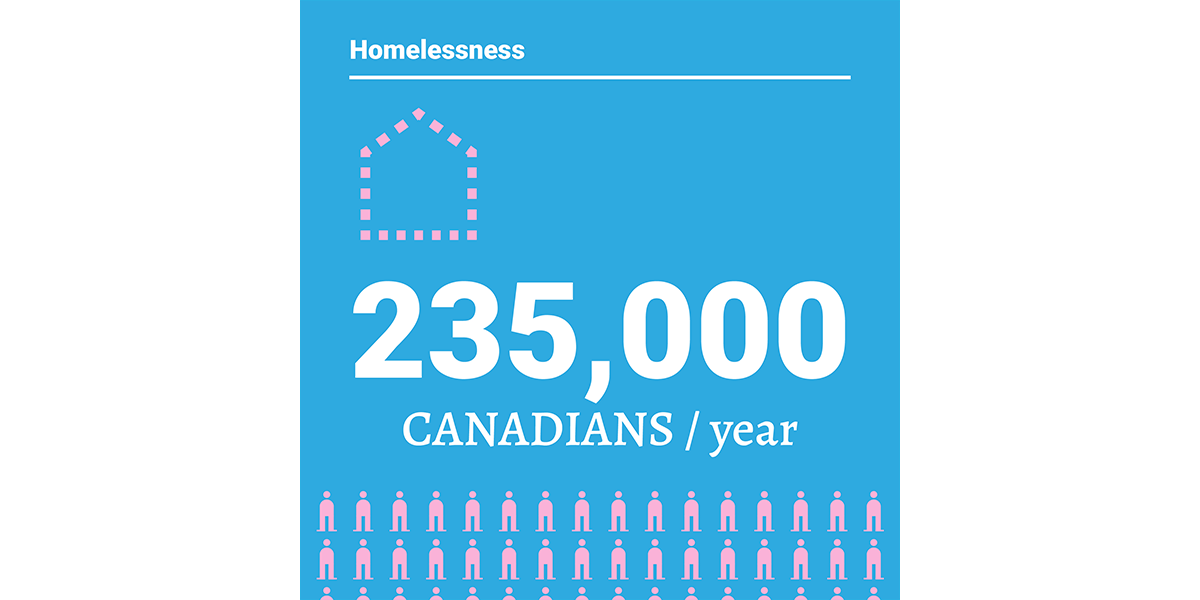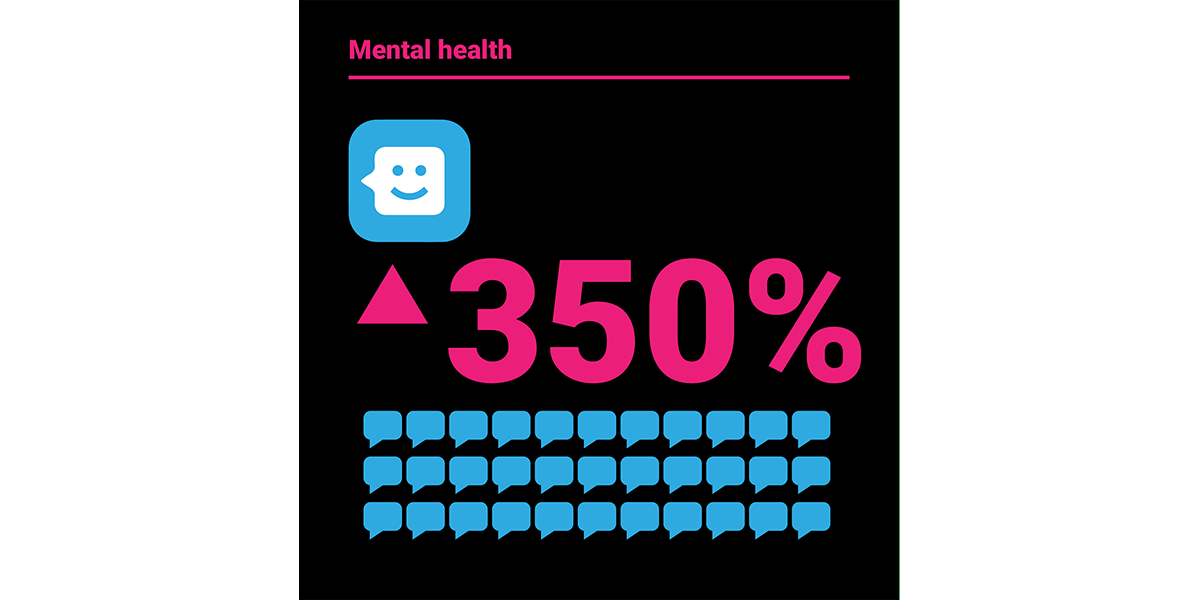#BuildBackBetter: Driving a forward-looking recovery
Why It Matters
In this time of pandemic and rapid change, dialogue and stories help us understand what’s happening around us, and the new choices ahead of us. We’re announcing #BuildBackBetter digital conversations on our collective recovery, including international perspectives, grassroots expertise, and people with lived experiences to better understand how communities are evolving — and how social impact work should adapt.

COVID-19 has blindsided the world with its global scale, speed, and economic turbulence.
Not only have social challenges like food and housing insecurity, unemployment, racism, digital divide, mental illness, and precarious workers’ rights been highlighted and exacerbated, but the sector that’s best positioned to help has also been fundamentally stretched and challenged.
The pandemic has revealed the fragility of the social impact world’s capacity, infrastructure, and resources to respond to COVID-19 and its cascading effects post-pandemic. Charities, non-profits, funders, co-operatives, and social enterprises are scrambling to keep up with demand, reposition themselves, and to keep their doors open amid uncertainty.
This raises the question: Is the pre-COVID social impact sector prepared to meet our communities’ post-COVID needs and ambitions?
Future of Good is excited to announce #BuildBackBetter — our new editorial direction, consisting of three exciting digital content projects to enhance sense-making, storytelling, and skill-building to help the social impact world drive a forward-looking recovery.
Best of all, Future of Good is thrilled to announce Community Foundations of Canada and United Way Centraide Canada as launch partners for #BuildBackBetter.
#BuildBackBetter kicks-off in mid-July with a series of webinar-style digital conversations to understand the dramatic changes communities face in the next 12 months. Following this, we’ll begin a crowdsourcing mission to identify Canada’s Top 100 Recovery Projects and tell their inspiring stories. We wrap up 2020 with a much-anticipated two-day digital-first 2020 Future of Good Summit to build the skills required to shift and adapt to new normals.
#BuildBackBetter complements local Vital Signs conversations, local impact programs, and national COVID-19 relief efforts delivered by the Canadian Red Cross, Community Foundations of Canada, and United Way Centraide Canada through the Emergency Community Support Fund.
Social impact professionals and entrepreneurs want to hear from voices they trust for guidance on how to navigate the transition to the new after-COVID era. This is hard, important work, and will require making sense of the choices ahead, learning from local recovery projects, and understanding the shifts and adaptations already underway to become more resilient and impactful.
Over the next several months, we’ll dive deep into what this all means — and here’s where we’ll start.
Understanding the new social determinants of health
A months-long, Canada-wide shutdown of economic and social activity has both highlighted and worsened many pressing social challenges.

Before the pandemic, 4.4 million Canadians experienced food insecurity, but Food Insecure Canada estimates that number will double by the end of 2020. Source: Food Insecure Canada

235,000 Canadians experienced homelessness each year, before the pandemic began, and experts say this number could skyrocket post-pandemic when eviction bans lift. Source: Homeless Hub, National Right to Housing Network.
Food insecurity. Housing. Social supports and coping skills. All of these mattered for well-being pre-pandemic. What will be the new social determinants of health in the wake of COVID-19, and how should the social impact sector approach them?
Closing the digital divide
Canada’s digital divide is widening the social divide in communities — this has never been more clear than throughout the pandemic.

More than a third of Canadians have to make sacrifices in order to afford home internet. Source: ACORN Canada

In 2017, 37 percent of rural Canadian households and only 24 percent of Indigenous households had access to a high-speed internet connection. Source: Government of Canada
After COVID-19, “nobody is ever going to question high-quality internet as a basic service required for everyday life,” said Maureen James, the community investment program manager at the Canadian Internet Registration Authority (CIRA), in a Future of Good webinar. What will it take to create a Canada where everyone’s digital rights are fulfilled?
Supporting collective mental health and stewarding loss
The collective psychological trauma of the pandemic is unlike anything Canadians have ever seen. How can communities and organizations manage this crisis?

Health Canada estimates that 11 million people are experiencing high levels of stress during COVID-19. Two million could be experiencing traumatic stress. Source: Health Canada

Kids Help Phone’s Crisis Text Line saw a 350 percent increase in demand from young people in March. Source: Kids Help Phone

Canada has lost more than three million jobs since the pandemic began. Source: Statistics Canada
Experts say we have a global mental health crisis looming. Is the social sector prepared to support Canadians through the post-pandemic recovery?
Addressing power, privilege and inequity in social impact
How privileged is the social impact world? What perspectives is the social impact world excluding? How could a more meaningfully inclusive and representative sector be built?

Just 22 percent of philanthropic grantmakers in Canada have a formal diversity, equity, and inclusion policy. Source: Philanthropic Foundations Canada

More than half of Canada’s non-profit organizations do not collect data on the diversity among their employees and boards. Source: Senate of Canada
At the same time as COVID-19 is revealing much about what needs to change in order to rebuild communities to be stronger, there is a global reckoning with racism, privilege and inequity taking place, led by the Black Lives Matter movement. The social impact sector is not exempt from these conversations — and addressing a lack of diversity and inclusion among the social impact workforce is overdue.
Youth rebuilding communities
Young people are incredible innovators, and are already creatively helping communities build back better — but could their contributions be stifled by a less than welcoming economy?

Youth unemployment in Canada reached a record high rate of 29.4 percent in May. Source: Statistics Canada

Canada’s GDP will drop by an estimated 6 percent this year, the most severe economic downturn since the Great Depression. Source: IMF

Canadian students who graduate into a recession earn 9 percent less over the course of their careers. Source: American Economic Journal: Applied Economics
With high unemployment rates, and bleak prospects for career growth during a recession, young people’s contributions to social impact work could be stifled by COVID-19. How can social impact organizations tap into this potential? We unpack how youth are rebuilding communities — and how youth believe the idea of work experience, workers rights, work environments, and work culture should be reimagined for recovery.

